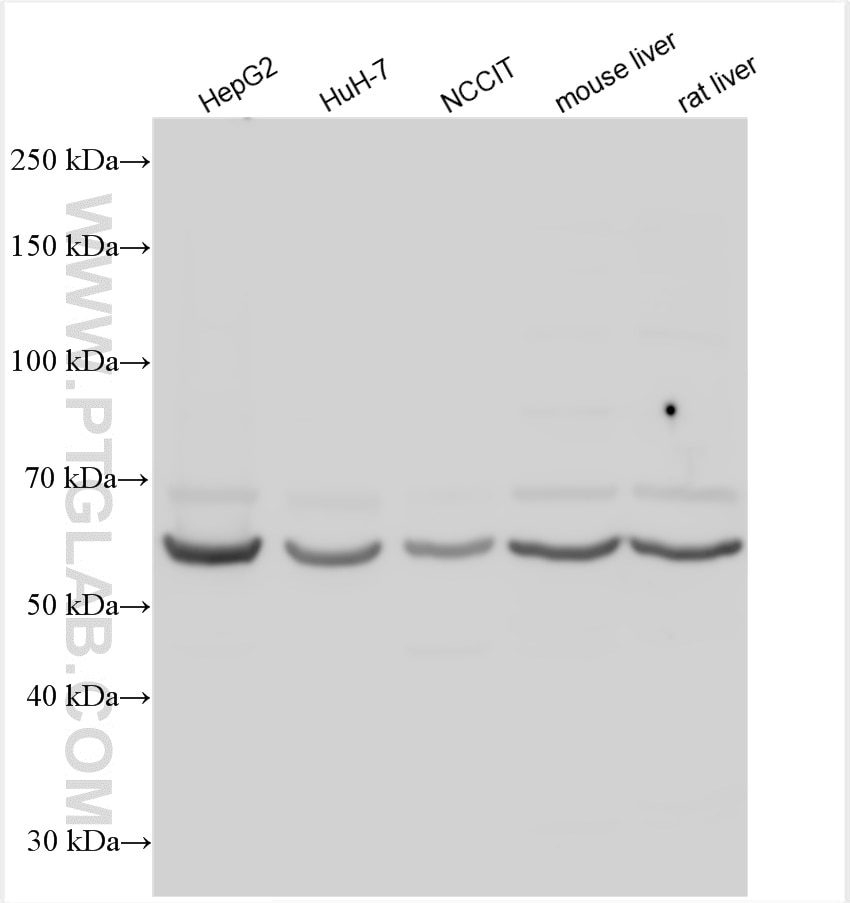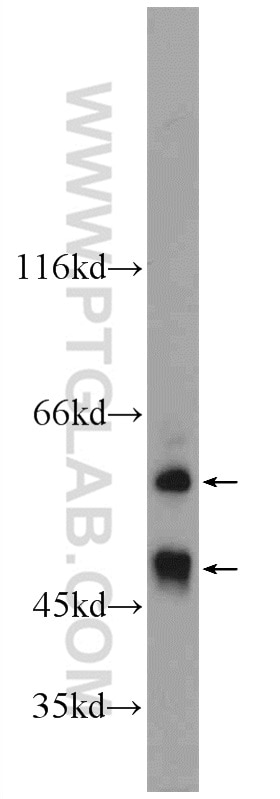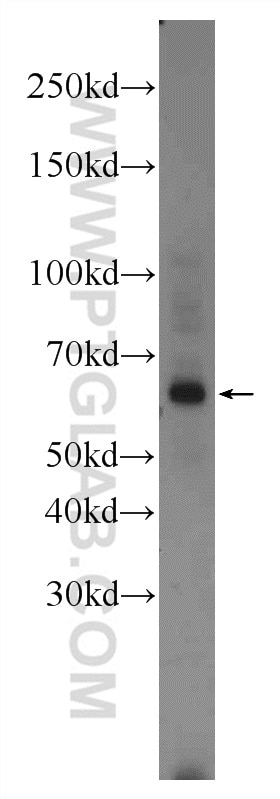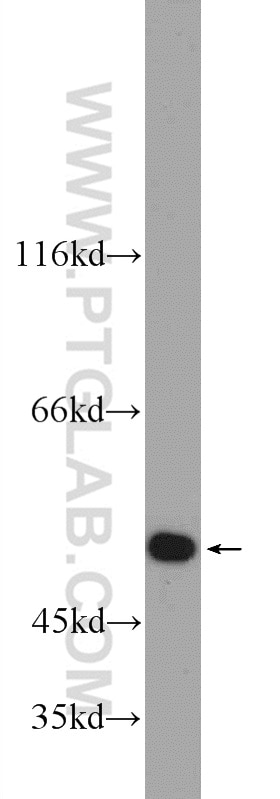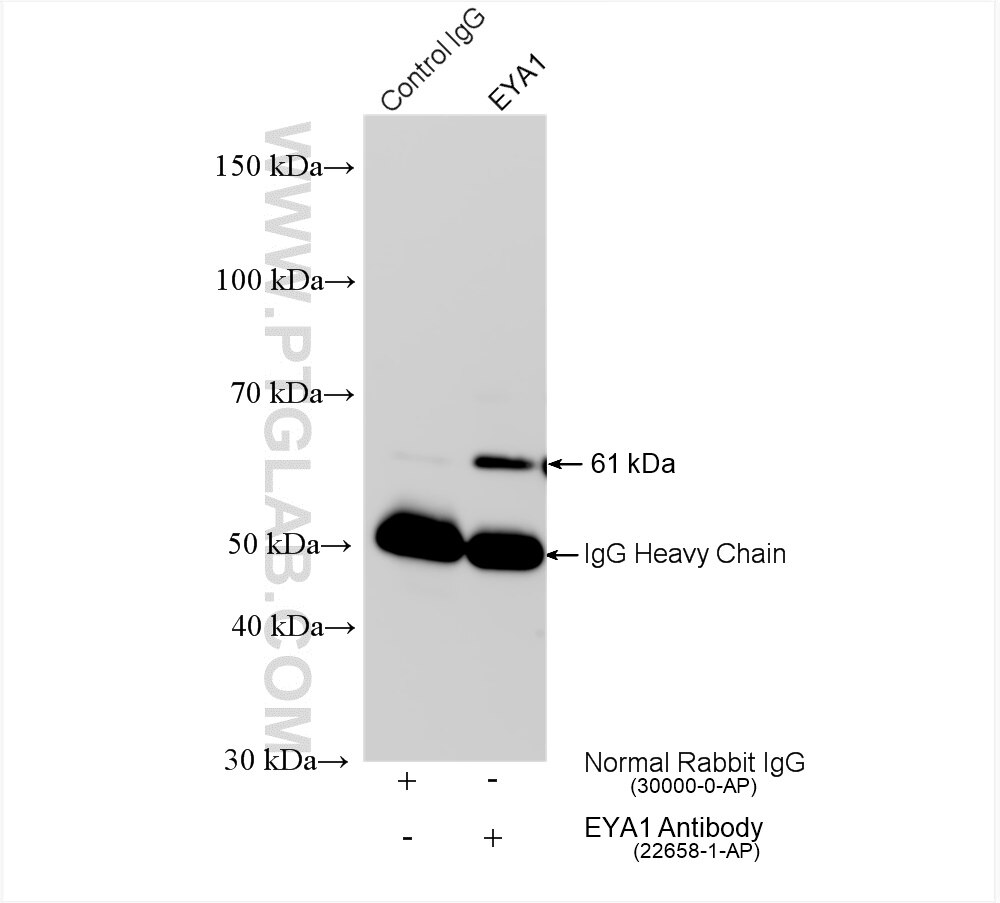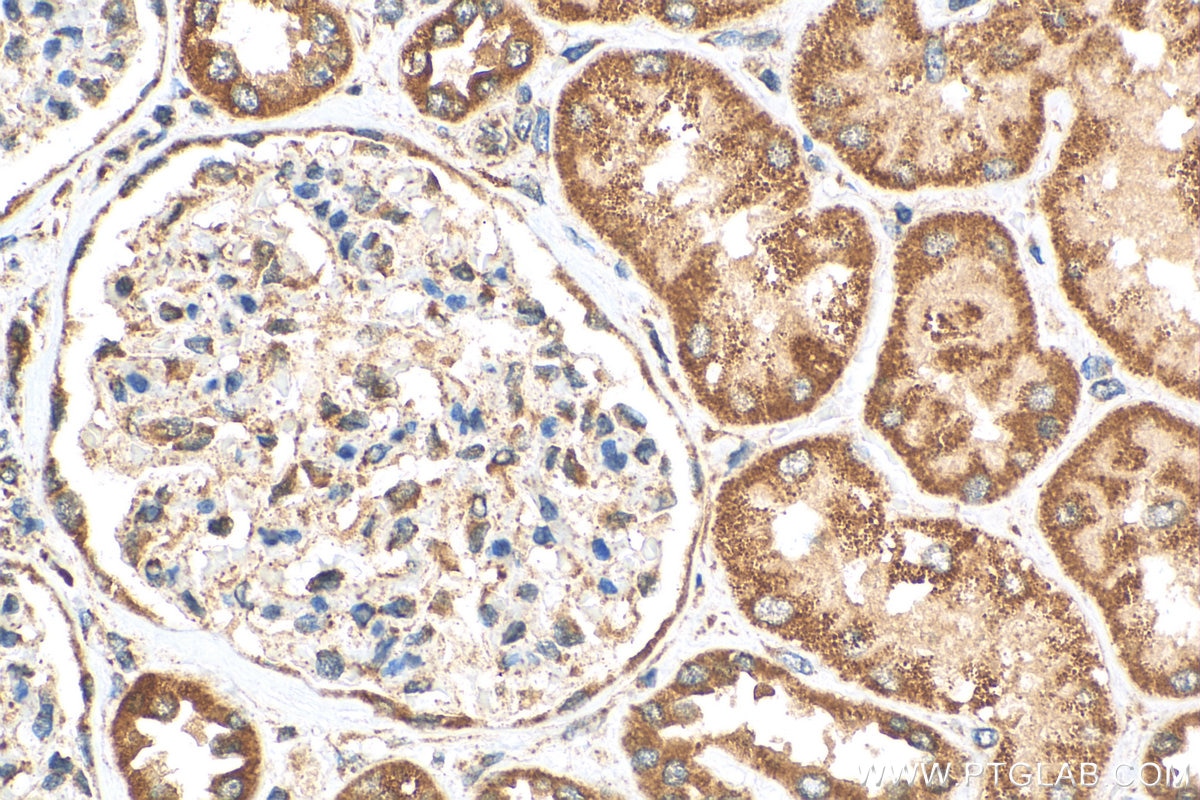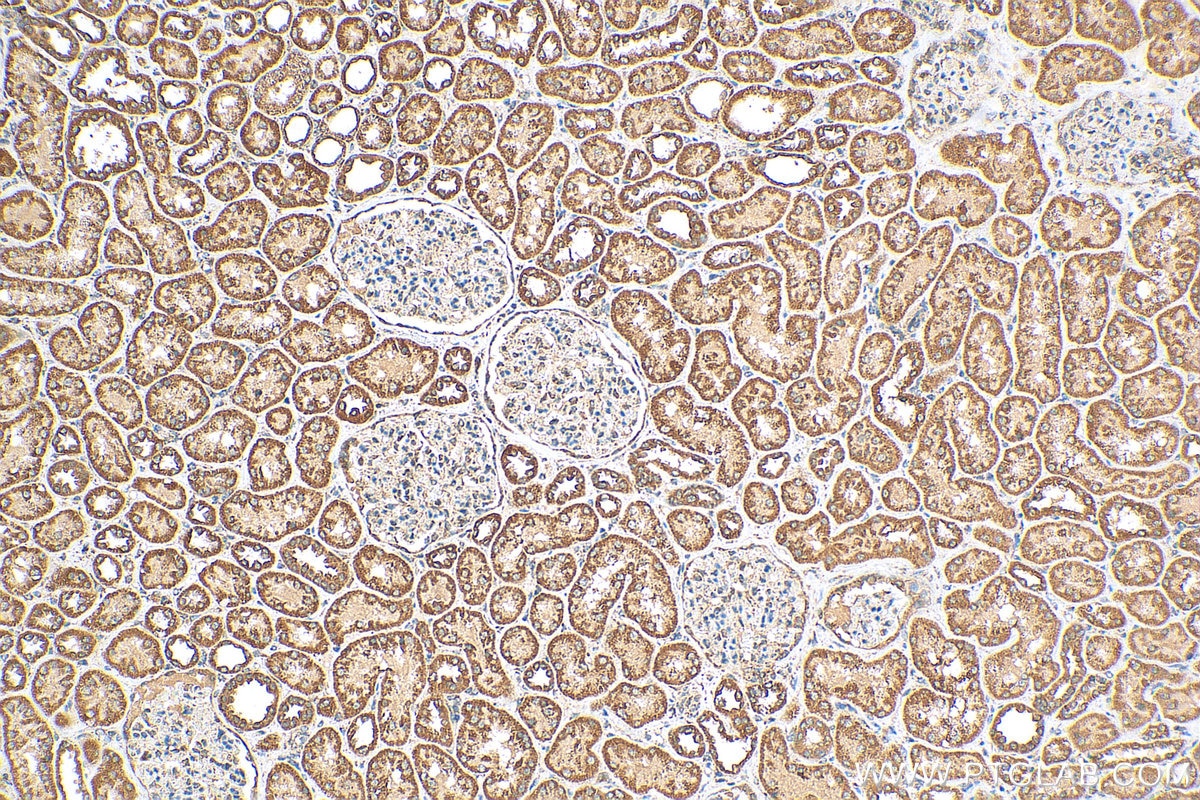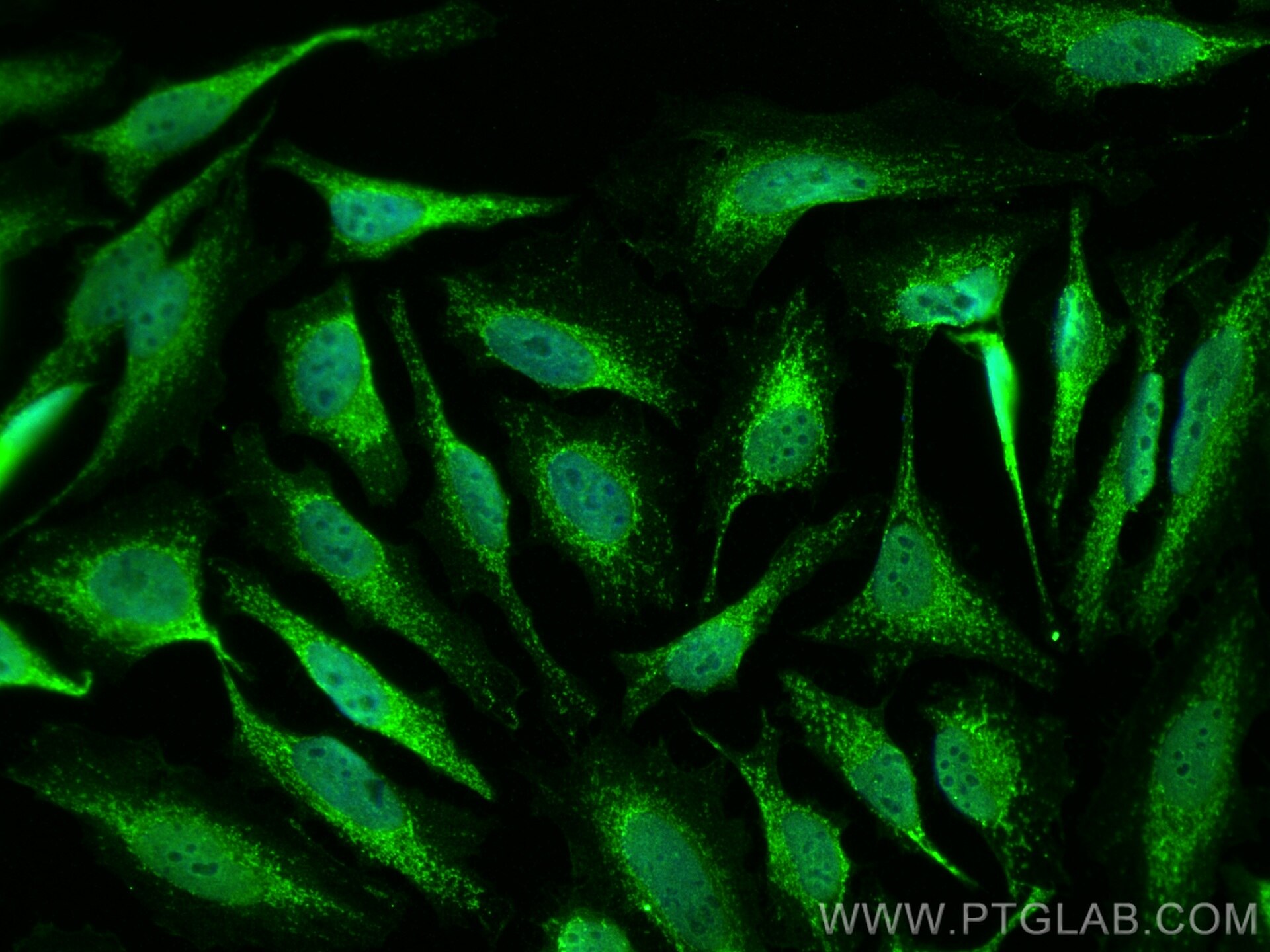- Featured Product
- KD/KO Validated
EYA1 Polyklonaler Antikörper
EYA1 Polyklonal Antikörper für IF, IHC, IP, WB, ELISA
Wirt / Isotyp
Kaninchen / IgG
Getestete Reaktivität
human, Maus, Ratte
Anwendung
WB, IP, IHC, IF, CoIP, ELISA
Konjugation
Unkonjugiert
Kat-Nr. : 22658-1-AP
Synonyme
Galerie der Validierungsdaten
Geprüfte Anwendungen
| Erfolgreiche Detektion in WB | HepG2-Zellen, HeLa-Zellen, HuH-7-Zellen, Maus-Kolongewebe, Mauslebergewebe, Mausnierengewebe, NCCIT-Zellen, Rattenlebergewebe |
| Erfolgreiche IP | HepG2-Zellen |
| Erfolgreiche Detektion in IHC | humanes Nierengewebe Hinweis: Antigendemaskierung mit TE-Puffer pH 9,0 empfohlen. (*) Wahlweise kann die Antigendemaskierung auch mit Citratpuffer pH 6,0 erfolgen. |
| Erfolgreiche Detektion in IF | HeLa-Zellen |
Empfohlene Verdünnung
| Anwendung | Verdünnung |
|---|---|
| Western Blot (WB) | WB : 1:2000-1:10000 |
| Immunpräzipitation (IP) | IP : 0.5-4.0 ug for 1.0-3.0 mg of total protein lysate |
| Immunhistochemie (IHC) | IHC : 1:250-1:1000 |
| Immunfluoreszenz (IF) | IF : 1:200-1:800 |
| It is recommended that this reagent should be titrated in each testing system to obtain optimal results. | |
| Sample-dependent, check data in validation data gallery | |
Veröffentlichte Anwendungen
| KD/KO | See 2 publications below |
| WB | See 6 publications below |
| IHC | See 4 publications below |
| IF | See 1 publications below |
| IP | See 1 publications below |
| CoIP | See 1 publications below |
Produktinformation
22658-1-AP bindet in WB, IP, IHC, IF, CoIP, ELISA EYA1 und zeigt Reaktivität mit human, Maus, Ratten
| Getestete Reaktivität | human, Maus, Ratte |
| In Publikationen genannte Reaktivität | human, Ratte |
| Wirt / Isotyp | Kaninchen / IgG |
| Klonalität | Polyklonal |
| Typ | Antikörper |
| Immunogen | EYA1 fusion protein Ag18489 |
| Vollständiger Name | eyes absent homolog 1 (Drosophila) |
| Berechnetes Molekulargewicht | 592 aa, 65 kDa |
| Beobachtetes Molekulargewicht | 60 kDa, 50 kDa |
| GenBank-Zugangsnummer | BC121799 |
| Gene symbol | EYA1 |
| Gene ID (NCBI) | 2138 |
| Konjugation | Unkonjugiert |
| Form | Liquid |
| Reinigungsmethode | Antigen-Affinitätsreinigung |
| Lagerungspuffer | PBS mit 0.02% Natriumazid und 50% Glycerin pH 7.3. |
| Lagerungsbedingungen | Bei -20°C lagern. Nach dem Versand ein Jahr lang stabil Aliquotieren ist bei -20oC Lagerung nicht notwendig. 20ul Größen enthalten 0,1% BSA. |
Hintergrundinformationen
The EYA1 (Eyes absent homolog 1) gene is the human homologue of the Drosophila Eya1 gene, which is essential for eye development in that species. There are 4 different isoforms of EYA1 (EYA1A, EYA1B, EYA1C, EYA1D), which are composed of 559 amino acids (AA), 592 AA, 592 AA and 557 AA, respectively. It should be noted that isoforms B and C have the same length; however, they could be considered different variants because of change in amino acidic composition (PMID: 24803398).
Protokolle
| Produktspezifische Protokolle | |
|---|---|
| WB protocol for EYA1 antibody 22658-1-AP | Protokoll herunterladen |
| IHC protocol for EYA1 antibody 22658-1-AP | Protokoll herunterladen |
| IF protocol for EYA1 antibody 22658-1-AP | Protokoll herunterladen |
| IP protocol for EYA1 antibody 22658-1-AP | Protokoll herunterladen |
| Standard-Protokolle | |
|---|---|
| Klicken Sie hier, um unsere Standardprotokolle anzuzeigen |
Publikationen
| Species | Application | Title |
|---|---|---|
Cell Rep YTHDF1 phase separation triggers the fate transition of spermatogonial stem cells by activating the IκB-NF-κB-CCND1 axis | ||
Front Oncol SIX1 Activates STAT3 Signaling to Promote the Proliferation of Thyroid Carcinoma via EYA1. | ||
Oncotarget Eyes absent gene (EYA1) is a pathogenic driver and a therapeutic target for melanoma.
| ||
Stem Cell Res Ther Co-transplantation with adipose-derived cells to improve parathyroid transplantation in a mice model. | ||
Clin Breast Cancer Dachshund 1 is Differentially Expressed Between Male and Female Breast Cancer: A Matched Case-Control Study of Clinical Characteristics and Prognosis. | ||
J Mol Neurosci MES23.5 DA Immortalized Neuroblastoma Cells Self-protect Against Early Injury by Overexpressing Glial Cell-derived Neurotrophic Factor via Akt1/Eya1/Six2 Signaling. |
